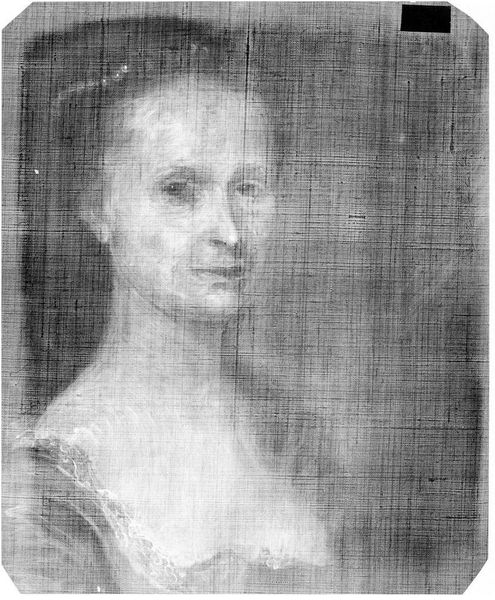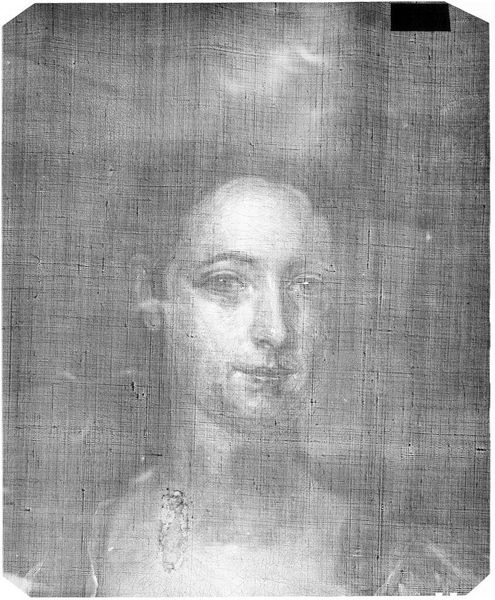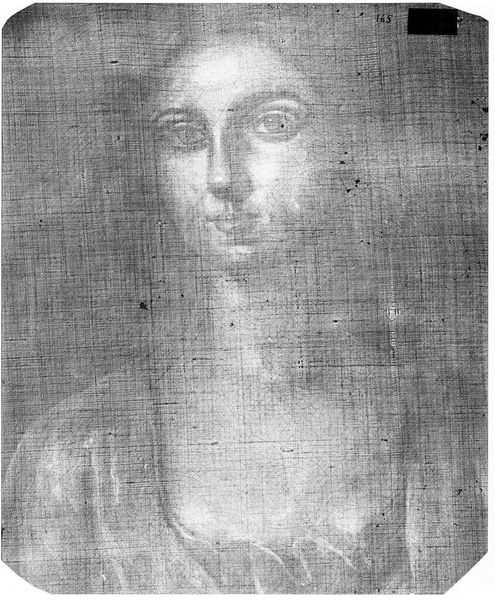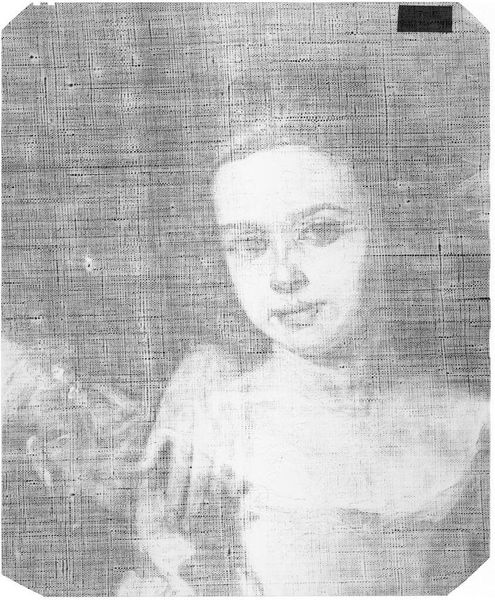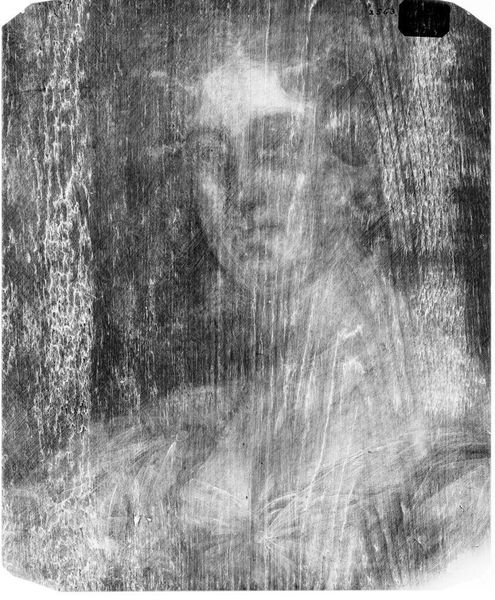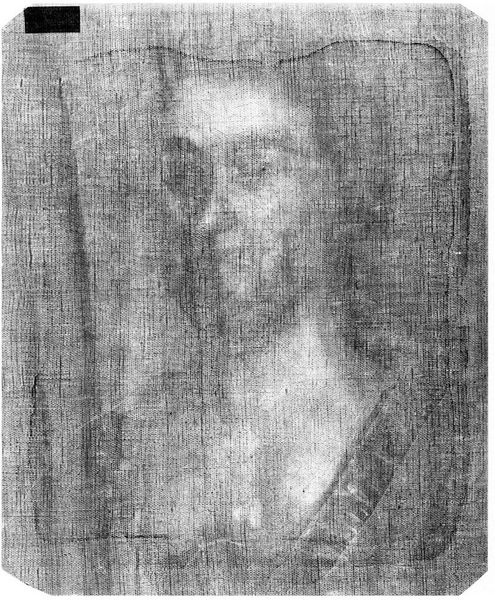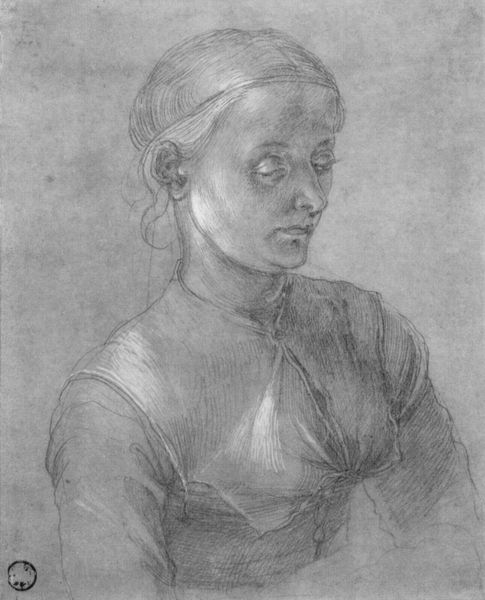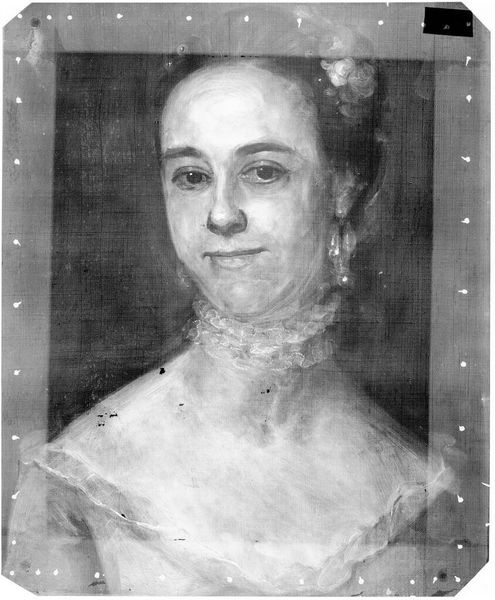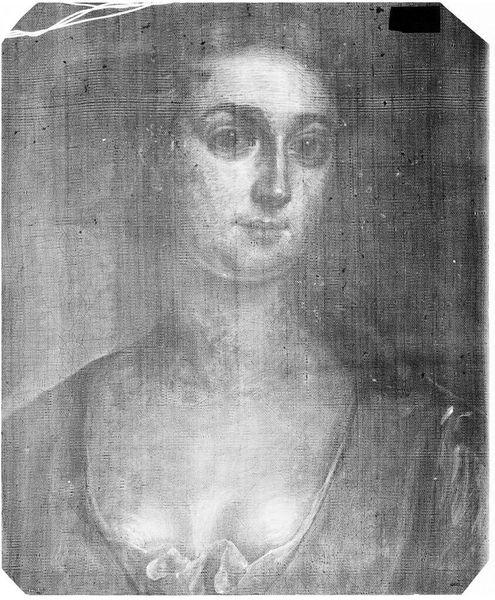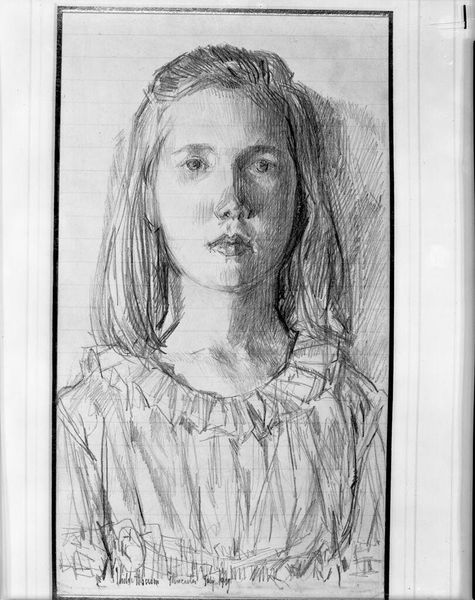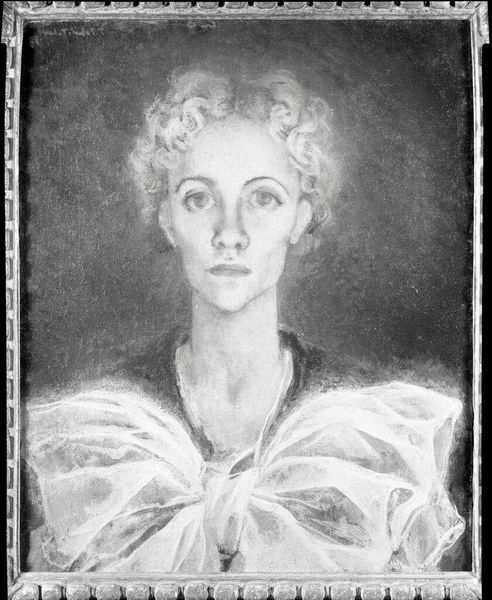
Copyright: CC0 1.0
Editor: So, this is an X-radiograph of "Elizabeth Oliver," by John Singleton Copley. It’s fascinating to see the portrait’s hidden layers revealed this way. What does this radiographic view tell us about the original portrait and its context? Curator: It unveils the materiality of representation. This portrait, and others of its era, served as a potent symbol of colonial aspirations. Copley, straddling both sides of the Atlantic, grappled with representing American identity within a European artistic tradition. How does this radiographic view disrupt or complicate our understanding of that tension? Editor: It's like peeling back the layers of not just the paint, but the societal expectations and artistic influences. Curator: Precisely! The radiographic view encourages us to question the layers of meaning embedded within the portrait itself, reflecting on issues of identity, power, and representation within a complex historical moment. This view asks us to consider the relationship between surface and interiority. Editor: That's a powerful idea; I hadn’t thought about it that way. It really changes how I see the portrait. Curator: Indeed, it's about unearthing the dialogue between art, history, and the ever-evolving narrative of identity.
Comments
No comments
Be the first to comment and join the conversation on the ultimate creative platform.
